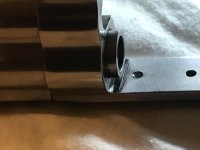gfors
Member
I am the original owner, and have put about 800 rounds of store-bought .357 158 grain rounds down the pipe of my 6" 686-6+. The top-strap is showing noticeable flame-cutting, at the B/C gap. My gunsmith checked the gap, and says it's within spec, but could certainly be smaller. How many more rounds can I shoot before I should worry about loss of structural integrity? When should I send it back to the mothership? How deep of a cut is safe?
http://smith-wessonforum.com/attachment.php?attachmentid=318671&d=1514730770
http://smith-wessonforum.com/attachment.php?attachmentid=318671&d=1514730770
Attachments
Last edited:


